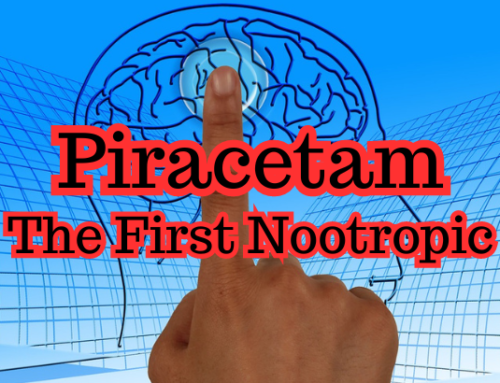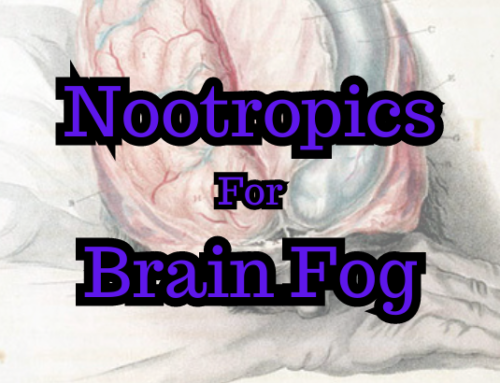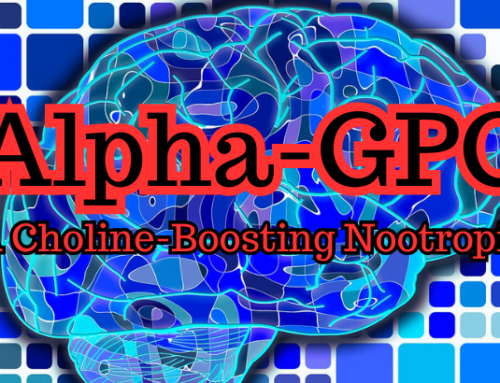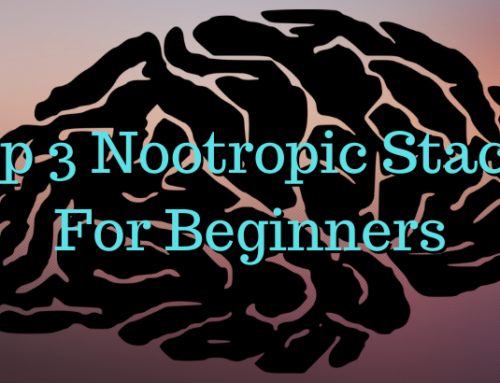Nootropic users often take more than one substance at a time. This is called stacking nootropics. One of the simplest, safest, and most effective stacks consists of just two substances: piracetam and alpha-GPC.
Both are well-known nootropics that have been around for a long time. They have each been the subject of numerous scientific studies and have been shown to enhance cognition. When stacked, piracetam and alpha-GPC can work together to improve focus, memory, and other aspects of cognitive functioning. But before we look at the benefits of this simple stack, let's take a quick look at each substance individually.
What Is Piracetam?
This is the substance that started it all. Piracetam was first created in the 1960's and inspired the creation of the word nootropic. The scientist who discovered piracetam noticed that it was able to improve several aspects of cognition without causing any side effects. He needed a new word to describe this effect and coined the term nootropic.
Piracetam is in a class of substances known as racetams. These are a chemically similar family of drugs, many of which have nootropic properties. Piracetam was the first racetam to be discovered and has been the subject of many scientific studies. It has been shown to have several nootropic effects.
 One study, for example, found that piracetam improved memory and learning after two weeks of daily administration.1 Another study, a large meta-analysis, found that piracetam had a measurable effect on memory and learning.2 These studies also found piracetam to be very safe.
One study, for example, found that piracetam improved memory and learning after two weeks of daily administration.1 Another study, a large meta-analysis, found that piracetam had a measurable effect on memory and learning.2 These studies also found piracetam to be very safe.
In addition to all the research that has been done on piracetam, there are countless anecdotal reports around the internet of people using it to boost cognitive performance. Nootropic users report that piracetam improves memory, learning, and can even have an impact on mood and anxiety levels. To learn more about this interesting substance, you can read this: Piracetam – The First Nootropic.
What Is Alpha-GPC?
Alpha-glycerophosphocholine, or alpha-GPC for short, is a common choline-boosting supplement. Choline is a precursor to the neurotransmitter acetylcholine.3 This neurotransmitter is known to play a role in memory, learning, attention, and muscle activation, among other things.4

One study found that alpha-GPC improved the symptoms of mild-to-moderate Alzheimer's Disease.5 Another study found that alpha-GPC was able to improve the symptoms of patients suffering from dementia.6 A third study found that alpha-GPC was able to improve cognition and speed up the recovery of people who'd had a stroke.7
These are just a few of the studies that have been done on alpha-GPC that show its nootropic potential. Nootropic users often report similar results. While alpha-GPC is sometimes taken by itself, it is usually taken as part of a larger nootropic stack. And one of the most common nootropics it's taken with is piracetam. To learn more about alpha-GPC, you can read this: Alpha-GPC – A Choline-Boosting Nootropic.
The Benefits Of Stacking Piracetam & Alpha-GPC
When taken together, users often report that piracetam and alpha-GPC have a synergistic effect. They have found that stacking these two nootropics can improve memory, learning, and focus. Some people even report a slight mood boost and a reduction in anxiety. Here are some of the potential benefits of this simple and effective stack:
Increased focus
- Improved memory
- Increased learning
- Improved mood
- Reduced anxiety
- Increased productivity
Another benefit of stacking piracetam and alpha-GPC is that doing so may reduce the incidence of side effects. Some people who take piracetam report that it gives them headaches. This is thought to be because of the way piracetam affects acetylcholine. Many users who report headaches from taking piracetam by itself report that taking it with alpha-GPC does not give them headaches. Since alpha-GPC boosts acetylcholine levels, this isn't surprising.
Most people who try piracetam and alpha-GPC don't experience any side effects. Those who do usually report that they are mild and go away as soon as they stop taking them. Side effects can include things like headaches, upset stomach, and nausea. Taking piracetam and alpha-GPC with a small meal may reduce or eliminate these side effects.
My Experience With Piracetam & Alpha-GPC
Piracetam and alpha-GPC was one of the first nootropic stacks I ever tried over a decade ago. It had been recommended to me by several people who claimed it helped them to focus, study, and be more productive. To be honest, I was a bit skeptical before trying this simple stack. I didn't expect much, but was pleasantly surprised when those expectations were exceeded.
 Now, the results weren't earth shattering – but they were noticeable. I felt a slight increase in focus and had an easier time staying on task. Neither piracetam nor alpha-GPC had done much for me on their own. But together, they had a slight-but-noticeable effect. This made me realize there was something to the whole idea of stacking nootropics and motivated me to try other stacks.
Now, the results weren't earth shattering – but they were noticeable. I felt a slight increase in focus and had an easier time staying on task. Neither piracetam nor alpha-GPC had done much for me on their own. But together, they had a slight-but-noticeable effect. This made me realize there was something to the whole idea of stacking nootropics and motivated me to try other stacks.
Nowadays when I stack nootropics, they typically contain a number of substances. But piracetam and alpha-GPC is a great beginner stack for anyone new to nootropics. Both substances have decades of human studies showing how safe they are. Although not everyone reports experiencing a nootropic effect, many do. And compared to lots of other stacks, this one is reasonably inexpensive.
For anyone new to nootropics who wants to try a simple and safe stack, piracetam and alpha-GPC is one of two that typically get recommended. The other is caffeine and L-theanine. You can read about that one here: L-Theanine and Caffeine – The Perfect Combo. For people who are sensitive to caffeine but want to try a nootropic stack, piracetam and alpha-GPC is obviously the way to go.
Conclusion
Stacking nootropics is a very common practice among users, especially more experienced ones. Piracetam and alpha-GPC is one of the simplest, safest, most effective, and most-widely-used nootropic stacks.
To learn about some other simple and effective nootropic stacks, you may be interested in the following articles:
The Top 3 Nootropic Stacks For Beginners
Have you used piracetam and alpha-GPC? What has your experience been like? Would you recommend this stack to others? Feel free to leave your answers in the comments section at the bottom.
To learn more about nootropics, sign up for the Nootropics Zone newsletter. You'll get the free gift, The Ultimate Nootropics Quick Reference Guide.
References
1Diamon, S., & Brouwers, E. (1976). Increase in the power of human memory in normal man through the use of drugs. Psychopharmacology (Berl). 49(3): 307-9.
2Waegemans, T. (2002). Clinical efficacy of piracetam in cognitive impairment: a meta-analysis. Dement Geriatr Cogn Disord. 13(4): 217-24.
3Bellar, D., LeBlanc, N., & Campbell, B. (2015). The effect of 6 days of alpha glycerylphosphorylcholine on isometric strength. Journal of the International Society of Sports Nutrition. Published online Nov. 17, 2015. Retrieved November 1, 2019 from https://www.ncbi.nlm.nih.gov/pmc/articles/PMC4650143/
4Jones, B. (2005). From waking to sleeping: neuronal and chemical substrates. Trends in Pharmacological Sciences, 26(11):578-86.
5De Jesus Moreno Moreno, Maria. (2003). Cognitive improvement in mild to moderate Alzheimer's dementia after treatment with the acetylcholine precursor choline alfoscerate: A multicenter, double-blind, randomized, placebo-controlled trial. Clinical Therapeutics, 25(1):178-193.
6Dogrell, S., & Evans, S. (2005). Treatment of dementia with neurotransmission modulation. Expert Opinion on Investigational Drugs, 12(10):1633-54.
7Barbagallo, S., Barbagallo, M., Giordano, M., Meli, M., Panzarasa, R. (1994). Alpha-glycerophosphocholine in the mental recovery of cerebral ischemic attacks. An Italian multicenter clinical trial. Annals of the New York Academy of Sciences, 717:253-69.
[This article was originally published on November 8, 2019. Updated December 3, 2021.]








Leave a Reply